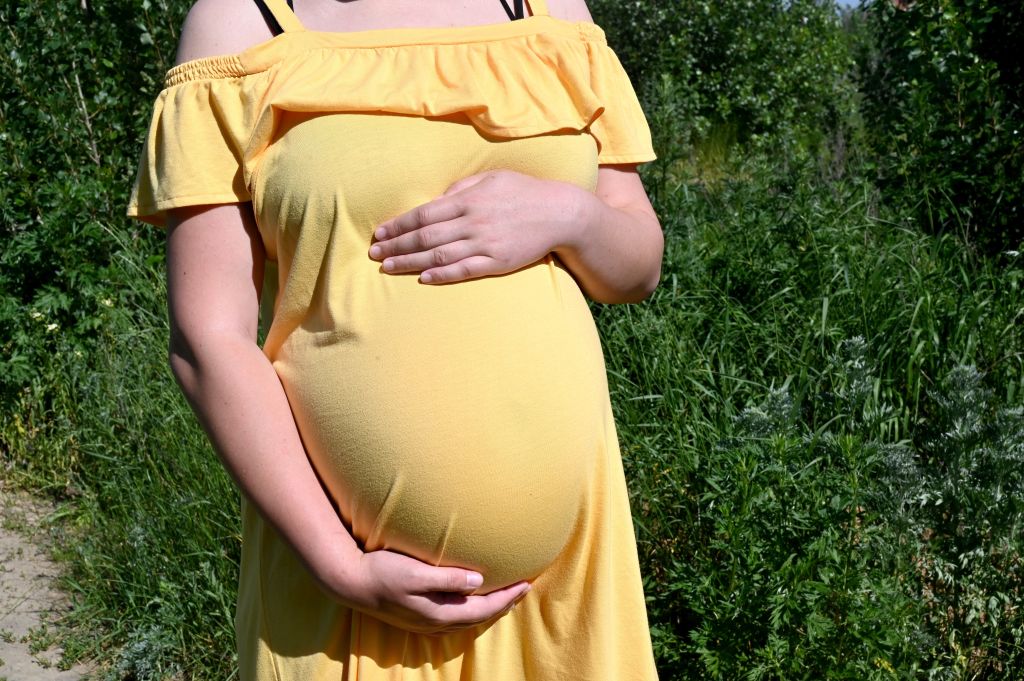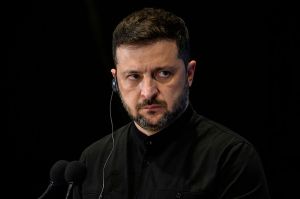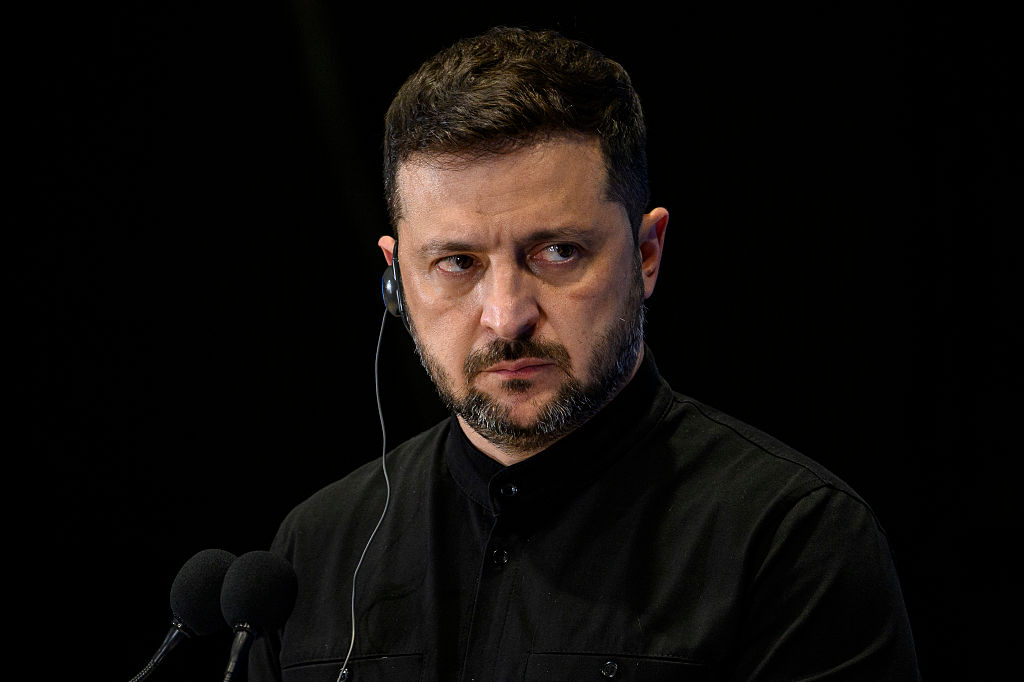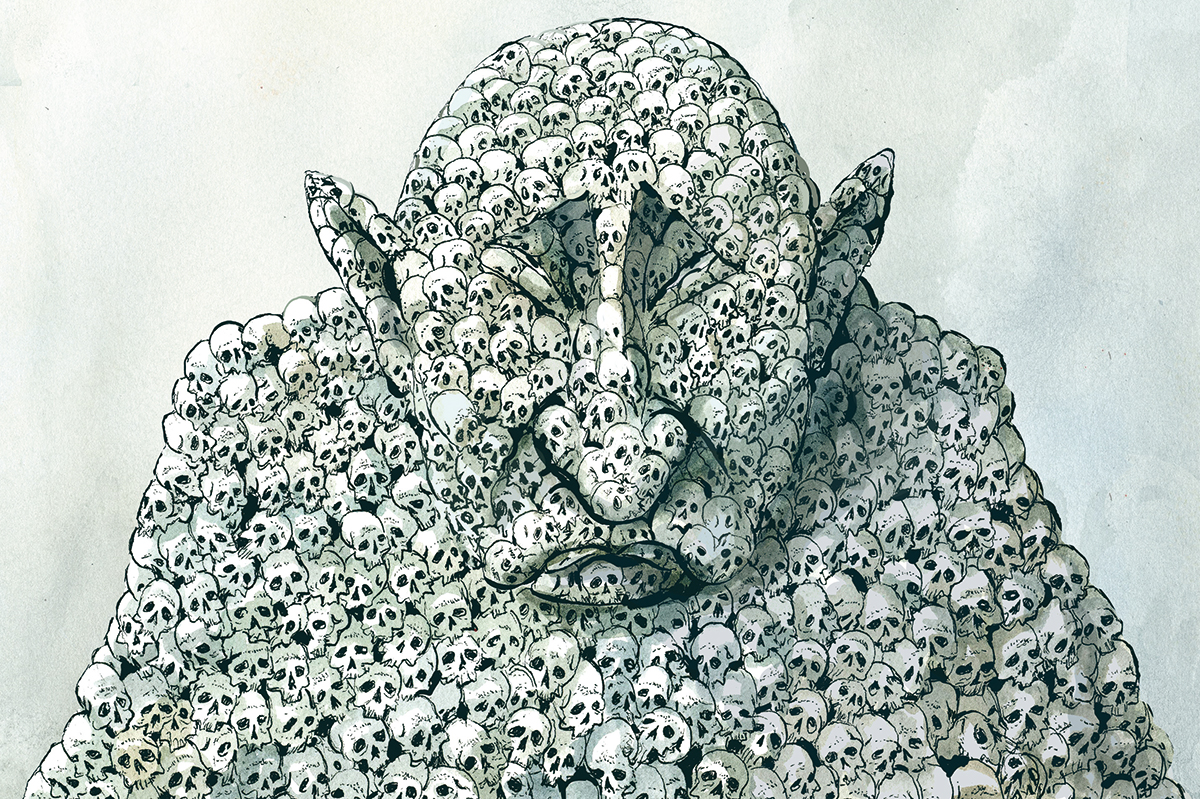For the cover of its June ‘Pride’ issue, People magazine chose the image of a newborn baby being cuddled by his father. Apparently, Wyatt Morgan Cooper’s birth marks the latest celebratory milestone for LGBTQ+ liberation: the right to biological children. His father, CNN anchor Anderson Cooper, told People how grateful he was for ‘all the lesbian, gay, bisexual, transgender and queer people who struggled for generations and have died never thinking this was a possibility’. As for raising Wyatt, Cooper is not taking paternity leave and is hiring a nanny recommended by his friend Andy Cohen, another gay dad. His ex- partner will also be on hand to help since, Cooper explained, ‘it’s good to have two parents, if you can’.
Oh, it’s good if you can, is it? Is a second parent like a spare tire or canned food, handy in a crisis, though generally nonessential? Of course not. Having two parents — specifically, a mother and a father — is the biological prerequisite to existence. Conceived with a donated egg, then carried by a surrogate, Wyatt Morgan Cooper has both a biological and a birth mother yet, as the writer Joyce Carol Oates noted on Twitter, ‘you’d think somehow dear Anderson was both father and mother’. Oates remarked how ‘strange’ it was for ‘the mother who’d been pregnant for nine months, delivered a baby, presented Anderson w/the baby’ now to be mysteriously absent from all media coverage. Her curiosity was met across the Twittersphere with accusations of ‘homophobia’.
There are two types of surrogacy: ‘traditional’, in which a woman is artificially inseminated and carries her own baby; and the more popular method (commissioned by Anderson Cooper) of ‘gestational surrogacy’, in which embryos are transferred from a Petri dish to the surrogate’s womb (so that birth mother and child are genetically unrelated). Though surrogacy is sometimes undertaken for altruistic purposes, it is more usually commercial.
Surrogacy laws in the US vary state by state. Unregulated, American surrogates make between tens and hundreds of thousands of dollars. Here, there are some obvious parallels with prostitution. As the feminist Andrea Dworkin wrote in 1978, ‘While sexual prostitutes sell vagina, rectum and mouth, reproductive prostitutes would sell other body parts: wombs, ovaries and eggs.’
Babies are much easier to market than back-alley sex. One agency, Our Fairy Godmother and Stork Surrogacy, uses the slogan ‘the epitome of human compassion’. Another, Road to Baby, shows a smiling blonde wearing a T-shirt captioned ‘I grow cute babies’ draped over her pregnant belly.
The language used to describe surrogates lacks transparency. Instead of referring to surrogates as birth mothers, terms like ‘gestators’ are used. But it is a scientific fact that the mother-child bond begins long before birth and has life-lasting consequences. This is widely acknowledged in relation to animals, as the bioethicist Jennifer Lahl has noted: in 22 states, it is illegal to separate a bitch from her pups until after eight weeks. So why is there no such requirement for human mothers?
The answer is money. Just look at surrogacy arrangements between the First and Third Worlds. Before commercial surrogacy was banned in 2017, Indian surrogates earned $400 million a year from foreign clients. In Ukraine, where the practice is still legal, the most prominent surrogate company, BioTexCom Centre for Human Reproduction, advertises on its website that ‘the cheapest surrogacy in Europe is in Ukraine, the poorest European country’.
BioTex made headlines during the pandemic since, due to travel restrictions, more than 100 newborns (and counting) have been stranded in a hotel, their foreign parents unable to collect them. BioTex has long attracted scrutiny for other reasons. In a recent report, the Guardian interviewed a number of Ukrainian surrogates. One was a 39-year-old shop assistant and single mother called Liudmyla, who got into surrogacy as a way of providing for her three children. She ended up in intensive care as a result of one surrogate pregnancy and, after giving birth to a girl on the second occasion, said she ‘didn’t want to give her away’. According to her, BioTex still owes her €6,000.
Last year, Samantha Hawley, a journalist for ABC, traveled to Ukraine to find Bridget Irmgard Pagan-Etnyre, whose twin had died at birth and whose American parents were allegedly clients of BioTex. Hawley reports that after Bridget was born prematurely and with disabilities, her parents ‘sent a legal letter asking that [her] life support be switched off when she was five months old and gravely ill’. Her parents’ letter stated that Bridget was in ‘a vegetative state’ and had ‘no chances of becoming a normal person’. (When Hawley tracked the child down, she found her to be ‘bright and engaging’, as well as verbal, affectionate and able to feed herself with assistance.) When it became clear that Bridget had survived, her parents ‘sent a second letter giving their consent for her adoption’. Meanwhile, according to the Ukrainian Children’s Ombudsman, her parents may have put in another order — for twins, again.
***
A print and digital subscription to The Spectator is just $7.99 a month
***
‘Reduction clauses’ are also common in surrogacy contracts. Brittney Rose Torres, a Californian surrogate, was instructed to abort one of her triplets after the embryo split. Torres refused and even offered to adopt the third unwanted baby, but the biological parents wouldn’t have it. Though clients can’t force surrogates to have abortions, they can apply immense pressure by refusing payment or suing them for damages.
Armed with woke platitudes, many states are moving to liberalize surrogacy. In February, Gov. Andrew Cuomo introduced his ‘Love Makes a Family’ campaign for legalizing commercial surrogacy. Cuomo described New York as ‘a national leader on LGBTQ rights’ and the absence of surrogacy as ‘shameful’. Nevertheless, when Cuomo introduced the bill last summer it was met with feminist resistance. Gloria Steinem warned of ‘profiteering from body invasion’ and ‘disenfranchised women at the financial and emotional mercy of wealthier and more privileged individuals’. Deborah Glick, the first openly gay member of the New York State Assembly, found the ‘commodification of women troubling’. But rather than put the issue to a vote, in April Cuomo sneaked commercial surrogacy into the state budget, meaning that the practice will become legal in New York as of February 2021.
No matter how glossy the branding, treating children as prized commodities is just the flipside of treating them as disposable. No one has a ‘right’ to have children. If gay or heterosexual couples seek to rescue children from abandonment by foster care or adoption, that is a noble pursuit. But to intentionally create a scenario in which a child is abandoned by her birth mother — that’s something else.
This article is in The Spectator’s August 2020 US edition.

























